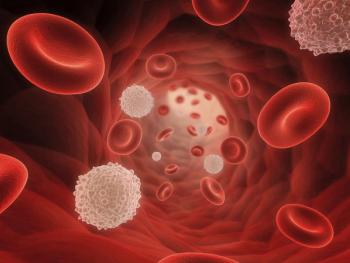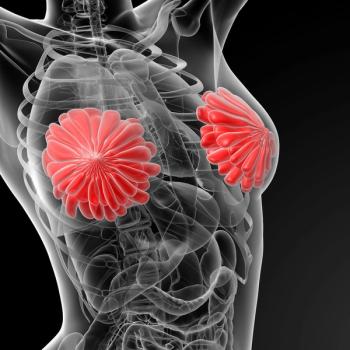
- ONCOLOGY Vol 14 No 3
- Volume 14
- Issue 3
Management of Venous Thromboembolism in Cancer Patients
Drs. Lee and Levine have written a thoughtful, thorough review of the management of venous thromboembolism in cancer patients. Venous thromboembolism remains an important, common, and potentially fatal complication of cancer and many of its therapies. Certainly, the incidence of upper extremity and catheter-related thrombosis has increased significantly in recent years with the widespread use of central venous catheters. On the other hand, recent years have also brought new, less invasive methods of diagnosis and the promise of still more new diagnostic methods to come.
Drs. Lee and Levine have written a thoughtful, thorough review of the management of venous thromboembolism in cancer patients. Venous thromboembolism remains an important, common, and potentially fatal complication of cancer and many of its therapies. Certainly, the incidence of upper extremity and catheter-related thrombosis has increased significantly in recent years with the widespread use of central venous catheters. On the other hand, recent years have also brought new, less invasive methods of diagnosis and the promise of still more new diagnostic methods to come.
Advances in therapy have moved the treatment of venous thromboembolism out of the hospital into the outpatient setting, while making it safer and less expensive. Moreover, translational medicine may someday apply the knowledge gained from the treatment of venous thromboembolism to the treatment of the malignancies themselves.
Central Venous CatheterRelated Thrombosis
Perhaps one of the most clinically important issues raised by Drs. Lee and Levine is the topic of central venous catheterrelated thrombosis. Clearly, the incidence of upper extremity deep-venous thrombosis has risen dramatically with the increased use of central venous catheters. As the authors note, the incidence of catheter-related upper extremity thrombosis may be as high as 60%, although the incidence of symptomatic upper extremity deep-venous thrombosis is substantially lower.
Earlier clinical observations had suggested that pulmonary embolism occurred rarely with upper extremity deep-venous thrombosis, but prospective studies have clearly contradicted this belief. Indeed, the incidence of pulmonary embolism in the setting of upper extremity deep-vein thrombosis has been demonstrated to be as high as 25% to 30%.[1] Fatal pulmonary embolism in this setting also has been well documented.
As the authors note, two open-label, randomized studies have demonstrated the safety and efficacy of prophylactic anticoagulation with warfarin or a low-molecular-weight heparin (eg, dalteparin [Fragmin]) in the primary prevention of catheter-related venous thromboembolism.[2,3]
In the Spanish trial, in which patients undergoing Port-a-cath placement were randomized to receive or not to receive once-daily low-molecular-weight heparin, the incidence of upper extremity deep-venous thrombosis was 6% in the low-molecular-weight heparin group and 62% in the control group, prompting an early termination of the study by the institutions ethics committee. Nevertheless, despite the well-documented incidence of catheter- related venous thromboembolism and its risk for pulmonary embolism, the routine use of effective, prophylactic anticoagulation remains embarrassingly lacking in the United States.
Diagnosis
Drs. Lee and Levine present a comprehensive discussion of newer tools and useful algorithms for the diagnosis of venous thromboembolism. D-dimer, a specific fibrin degradation product, has improved the accuracy of the noninvasive work-up for venous thromboembolism in patients with a low clinical likelihood of thrombosis. While, as the authors note, some recent data suggest that this test may have a lower negative predictive value in cancer patients, this seems to be related primarily to the increased prevalence of venous thromboembolism among cancer patients. Although a decreased specificity of D-dimer in cancer patients was observed in the single study that they cite, the specificity was within the range found in other studies of patients without cancer. Although insufficient alone, the use of D-dimer, in conjunction with other noninvasive diagnostic tests, represents another step toward the rapid, noninvasive, and cost-effective diagnosis of venous thromboembolism.
Of some interest are preliminary data suggesting that D-dimer may play a useful role as a preoperative, noninvasive predictor of lymphovascular or lymph node involvement in breast cancer or of the depth of tumor invasion in colorectal cancer.[4,5]
Although magnetic resonance imaging (MRI) is not yet ready for widespread clinical use in the diagnosis of pulmonary embolism, a recent investigation suggests that this modality may someday prove useful as a diagnostic tool in this setting.[6] Magnetic resonance imaging offers the potential for the noninvasive diagnosis of pulmonary embolism with a concomitant functional cardiac evaluation (to assess right-ventricular wall motion), as well as the detection of other pulmonary abnormalities, without the pitfalls of spiral computed tomographic (CT) scanning. In addition, using various spin characteristics, MRI may distinguish among acute, subacute, and chronic processes.
Heparin and Cancer
The authors only briefly mention the possible antineoplastic effects of heparin. An in-depth discussion of these issues was neither the purpose of their article nor is appropriate for its review. Nevertheless, a substantial body of literature regarding the connection between heparin and cancer continues to grow.
Several individual studies and recent meta-analyses have demonstrated an improvement in the survival of cancer patients treated with low-molecular-weight heparin.[7,8] This improved outcome was not attributable to the prevention of venous thromboembolism in any of the studies.
A growing body of data documents direct antitumor, antiangiogenic, and immune-modulatory effects that may all be implicated to explain to these survival advantages.[9,10] Although these various mechanisms justify future clinical investigation into the possible antineoplastic benefits of the low-molecular-weight heparins for malignant disease, enthusiasm must be tempered, pending studies that control for confounding variables.
References:
1. Monreal M, Lafoz E, Ruiz J, et al: Upper-extremity deep venous thrombosis and pulmonary embolism: A prospective study. Chest 99:280-283, 1991.
2. Bern M, Lokich J, Wallach S, et al: Very low doses of warfarin can prevent thrombosis in central venous catheters: A randomized prospective trial. Ann Intern Med 112(6):423-428, 1990.
3. Monreal M, Alastrue A, Rull M, et al: Upper extremity deep-venous thrombosis in cancer patients with venous access devicesprophylaxis with a low molecular weight heparin (Fragmin). Thromb Haemost 75(2):251-253, 1996.
4. Blackwell K, Haroon Z, Broadwater G, et al: Plasma D-dimer levels in operable breast cancer patients correlate with clinical stage and axillary lymph-node status. J Clin Oncol, March 2000(in press).
5. Oya M, Akiyama Y, Yanagida T, et al: Plasma D-dimer level in patients with colorectal cancer: Its role as a tumor marker. Surg Today 28(4):373-378, 1998.
6. Meaney J, Weg JG, Chenevert TL, et al: Diagnosis of pulmonary embolism with magnetic resonance angiography. N Engl J Med 336:1422-1427, 1997.
7. Lensing A, Prins M, Davidson B, et al: Treatment of deep venous thrombosis with low-molecular weight heparins: A meta-analysis. Arch Intern Med 155:601-607, 1995.
8. Siragusa S, Cosmi B, Piovella F, et al: Low-molecular weight heparins and unfractionated heparin in the treatment of patients with acute venous thromboembolism: Results of a meta-analysis. Am J Med 100:269-277, 1996.
9. Engelberg H: Actions of heparin that may affect the malignant process. Cancer 85:257-272, 1999.
10. Zacharski L, Ornstein D: Heparin and cancer. Thromb Haemost 80:10-23, 1998.
Articles in this issue
almost 26 years ago
FHIT Gene, Smoking, and Cervical Canceralmost 26 years ago
IOM Medical Error Estimates Questioned, But Legislation Consideredalmost 26 years ago
Less Toxic Therapies for Hodgkin’s Disease May Reduce Secondary CancersNewsletter
Stay up to date on recent advances in the multidisciplinary approach to cancer.


















































































